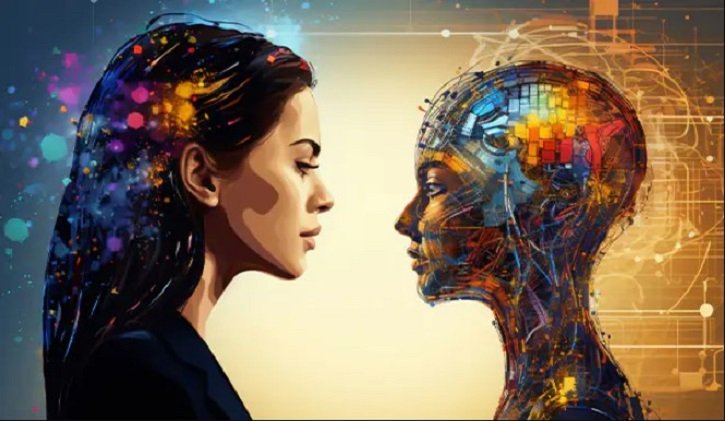For centuries, storytelling has played a significant part in human communication. Whether it is a great novel, an engaging video, or a convincing business presentation, storytelling can capture and hold attention. Be it digitalization-hastened pace that makes the indication of high-quality bulk stories all that more of a challenge: AI-driven storytelling solutions are called in to make efficient but also enjoyable content development.
AI-Powered Storytelling
With AI transforming our methods to create and consume content, new tools have come about capable of helping generate text, images, videos, and even voiceovers. While the traditional storytelling forms remain intact, with audiences being able to enjoy stories as they are told or read, analysing audience preferences can provide information on what kind of narrative can be tailored to a specific demographic to ensure a successful higher retention and engagement rate. From marketing to education and entertainment, AI is changing the way stories will be told.
For example, through AI presentation tools, businesses now have an easier way of communicating the ideas-the creation of beautiful, compelling, and data-driven narratives that resonate with audiences. Such tools rely on AI to generate beautiful visuals, suggest effective structure to the story, and even auto voice narration for more seamless presentations.
How AI Uses Storytelling to Improve Engagement
Now, engagement would arguably be the most important watershed for storytelling. In this regard, AI increases audience engagement in the following ways:
- Personalized Content Creation
AI algorithms mine big pools of data in order to create pieces of personalized content that are aligned with user interests. Just like how Netflix and Spotify both rely on the use of AI to recommend content based on a person’s taste in an effort to retain and satisfy users, in the same way, AI-based writing assistants could also be used by brands to write their own specific blog posts, email campaigns, or social media content that speak to the intended audience.
- Data-Driven Narratives
Using AI, storytellers are clear on how data can be useful to spot trends and audience behaviors. Examples include Persado and Jasper, which create content designed to drive engagement, based on historical data. This makes the story creative but strategically relevant to the audiences.
- Automated Video and Audio Content
High-end AI-driven platforms, such as Synthesia and Pictory, do full justice for content creators by allowing them to produce high-quality videos without expensive production teams. These tools turn texts into captivating scripts and coveted animations, thereby allowing businesses and educators to express heavy concepts easily. Thanks to AI-powered voice synthesis, the experience is enormously elevated by producing human narrations, without actually using any human voice.
- Interactive and Adaptive Storytelling
AI increases the engagement of the stories by making them even more interactive and adaptive. Chatbots and virtual assistants, such as ChatGPT and Replika, now provide real-time dynamic experiences where users can change some parts of the story. In gaming, AI-powered NPCs (non-playable characters) respond individually according to the player choices, which fits well with an already suggested immersion and personalization.
Actionable Strategies for Using AI in Storytelling
With these tactics, you can actually maximize the whole storytelling advantage of AI:
- Use AI for Content Ideation
AI-based tools such as Copy.ai and Writesonic can help on topics, outlines, and drafts, making it much easier for a content creator to work past the dreaded writer’s block. By automating the ideation process, the writer with an AI partner can focus on making the narrative special.
- AI-Visual Created
Canva and Runway ML are a few examples of online contributors of growing AI-enabled design where storytellers can make their designs not only visually stunning but have such graphics, infographics, and videos combined with great textual creativity, causing raised audience retention.
- Optimize Content for SEO
Among the most striking AI tools in this category are Surfer SEO and Clearscope, which analyze search trends and autocomplete the suggestions for improvement or optimization with a goal to enhance visibility and clarity of the content. Jutting forward into AI-centric keyword research storytelling places you right out in front of the targeted audience with right point-in-time messaging driving higher engagement.
- Testing and Analyzing for Audience Engagement
AI analytics-the Google Analytics and HubSpot-various tools of today can help measure the performance of that specific content by tracking people’s activities with regard to it. This helps storytellers to analyze their storytelling technique and tailor their content in terms of what the audience would want.
The Future of AI in Storytelling
It is widely believed that the role of AI in storytelling will expand exponentially with time. Some future developments may include:
- Hyper-Personalized Content Experiences: AI will deliver even more tailored narratives based on real-time user interactions and emotional analysis.
- AI-Generated Movies and Scripts: AI is already being used in scriptwriting and video production, with tools like OpenAI’s DALL·E and Runway ML generating creative content.
- Enhanced Voice and Emotion Recognition: AI will better understand and respond to human emotions, making storytelling more immersive and impactful.
Conclusion
AI storytelling is changing the game for all forms of content. It offers the transformation of stories into techniques that are more engaging, efficient, and personalized. Helping enterprizes, educators, and content creators into weaving marvelous tales that magnetically capture their audiences to interact with their stories is what that shining future unfolds for AI technology. And as it continues to develop, the avenues for automated storytelling will become even broader, creating more and more opportunities for creativity and engagement in this age of digitization.

